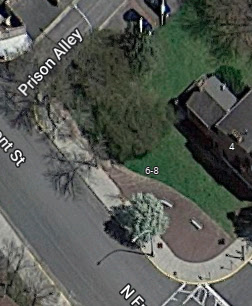As we move closer to Halloween and to what is probably the most consequential election in my lifetime, here is what's happening in Hudson.
- On Monday, October 21, the Hudson Housing Authority Board of Commissioners meets at 6:00 p.m. The board is expected to discuss the Revised Preliminary Redevelopment Plan. The meeting is a hybrid, taking place in person in the Community Room at Bliss Towers and on Zoom. Click here to join the meeting remotely.
- On Tuesday, October 22, the Common Council Finance Committee meets at 5:15 p.m. The meeting is a hybrid, taking place in person at City Hall and on Microsoft Teams. Click here for the link to join the meeting remotely.
- Also on Tuesday, October 22, the Common Council ad hoc Parking Study Committee meets at 6:00 p.m. The meeting is a hybrid, taking place in person at City Hall and on Microsoft Teams. Click here for the link to join the meeting remotely.
- On Wednesday, October 23, the Common Council ad hoc Truck Route Committee meets at 6:00 p.m. The meeting is a hybrid, taking place in person at City Hall and on Microsoft Teams. Click here for the link to join the meeting remotely.
- Also on Wednesday, October 23, the Furgary Park Visioning Community Roundtable Event takes place at 7:00 p.m. at The Spark of Hudson, 502 Union Street. Residents are invited to share their ideas for transforming the Furgary site into a community recreational resource.
- On Thursday, October 24, the Public Works Board, tasked with overseeing the city's Sidewalk Improvement District, meets at 6:00 p.m. The meeting is a hybrid, taking place in person at City Hall and on Microsoft Teams. Click here for the link to join the meeting remotely.
- On Friday, October 25, the Historic Preservation Commission meets at 10:00 a.m. The meeting includes public hearings on the plans for the rehabilitation of the Public Square and on the hardship application for 431 East Allen Street. The meeting is a hybrid, taking place on person in the Council Chamber at City Hall and on Microsoft Teams. Click here for the link to join the meeting remotely.
And there are a lot of things happening on the weekend, which Gossips will cover tomorrow in a separate post.
COPYRIGHT 2024 CAROLE OSTERINK




















.jpg)





